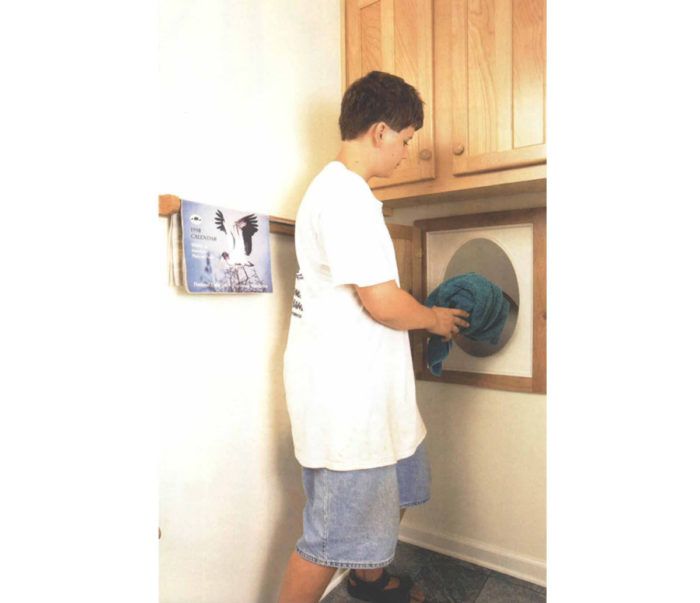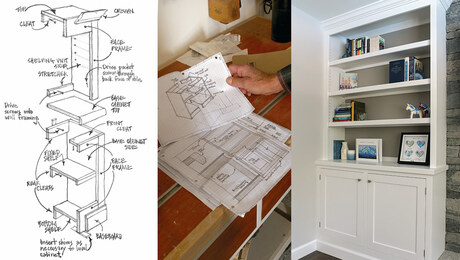Making the Most of a Laundry Room
A laundry chute, a custom-built towel drawer and a fold-down ironing board ease the tedium of wash day.

Synopsis: Handling the family’s laundry is hard enough — why fight the laundry room, too? The author shares his tips for creating an efficient laundry area equipped with a laundry chute, a fold-down ironing board, and a custom towel drawer.
Many builders rely on fancy kitchens, baths, living rooms and exterior facades to sell their houses. To give my buyers real value, though, I think that I have to put an equal effort into the utilitarian aspects of my houses.
When I’m designing a house, one of my starting points is the laundry. Features such as laundry chutes and towel drawers that extend directly from the laundry into a bathroom lessen wash-day drudgery.
Locate laundries centrally
Laundry rooms play a big role in making a house convenient. A larger laundry room could double as a sewing or hobby room, already set up with ventilation and a sink. Some designs I plan to build have the laundry on the second floor. If all the bedrooms are upstairs, it’s logical for the laundry room to be upstairs, too. Then I build two towel drawers, one to each second-floor bath.
I place the laundry in a central spot relative to the bathrooms — that is, adjacent to the first-floor bath, which is directly below a second-floor bath. This way, laundry chutes and towel drawers, not to mention plumbing, are easy to place. And I can build a closet off the laundry for a direct-vented water heater. This central location is close to showers and faucets, so there isn’t a wait for hot water. I try to put other mechanicals here, such as the electrical panel, the central vacuum and the alarm controls.
Opening the house’s primary side door into the laundry is popular, particularly with families that have young children. If you regularly hang clothes outside to dry, the trek to the clothesline is shorter.
The laundry is also a great spot for a closet to store cleaning gear. I install hooks for a heavy-duty mop and broom, and leave room for a vacuum cleaner.
Appliances go on an exterior wall
If the laundry room is the main side entry to the house, it’s imperative to locate the appliances and fixtures to maintain an unobstructed path through the room. The laundry room is a workroom where the debris of half-finished tasks may linger. I try to anticipate these scenarios and design around them. For example, I like to include a foldaway ironing board, positioned so that even when it’s open, it’s out of traffic’s way. I use one by Nutone. Most foldaway ironing boards fit between 16-in. o. c. studs, so if one isn’t in the budget right away, you can easily add it later. Just be sure there’s a clear stud bay in the right spot and a nearby electrical outlet.
I position the washer and dryer on an exterior wall so that the dryer vent can be short and straight. In cold climates, though, you might think twice before locating plumbing on outside walls. The washer shouldn’t be far from the laundry-chute hampers. Other considerations are a surface for folding laundry and a bar for hanging clothes.
For more photos, drawings, and details, click the View PDF button below:


























